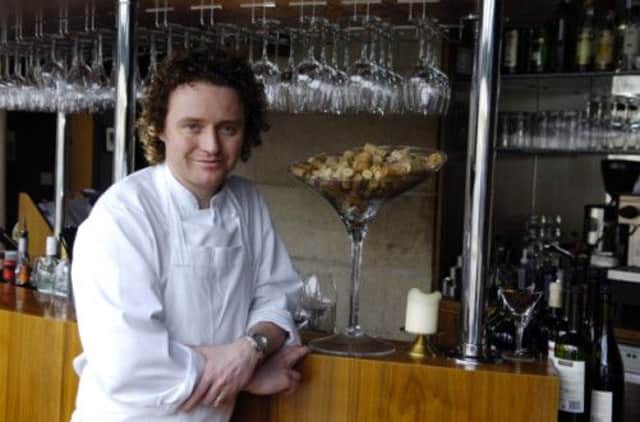Tom Kitchin: Chocolate truffle and mousse recipes


The secret to locating good chocolate is to find those producers who really care about where their ingredients come from and who understand the beauty of roasting and grinding pure cocoa beans in a careful, crafted way. Seek out the very best quality and try to understand where the ingredients sit in nature and the character they possess.
There are a few key things that set good chocolate apart – the beans, the proportion of cocoa solids and cocoa butter, the amount of sugar content and the amount of flavouring added. If you’re seeking out a good quality chocolate – either for cooking or for eating on its own – always read the list of ingredients. That will give you a good indication of excellence. Generally, the higher the percentage of cocoa content, the less sugar has been added and the more pure the chocolate will be. Look out for chocolate that has 70 per cent or more cocoa solids.
Advertisement
Hide AdAdvertisement
Hide AdWhat you really want is to find chocolate that has very little added to it and the core ingredients should be a high percentage of cocoa and cocoa butter, and maybe some natural flavouring if you prefer something a little different, but that’s all. Often, something else is added, such as sugar, milk, vegetable fats or vanilla, but these are best avoided, especially if you’re cooking with it.
As well as studying the ingredients, you can also tell how decent chocolate is by touching and breaking it. Good chocolate will melt quite quickly in your hand and the quicker it melts, the better it is because that tends to indicate it has a high cocoa butter content. It should also snap quite cleanly when you try to break it.
When it comes to cooking, a solid bar or block of chocolate works best for rich cakes, mousses, cheesecakes, gateaux, tarts or sauces, while cocoa powder can give a stronger, more bitter, flavour to cakes, icing, biscuits and, indeed, these delicious truffles.
Twitter: @TomKitchin
Chocolate Mousse with Raspberries
Serves four
150g dark chocolate (70 per cent cocoa solids)
4 eggs, separated
75g sugar
30g whipping cream
2 tsp Drambuie
20 raspberries
icing sugar for dusting
Break up the chocolate and put it in a bowl. Bring a saucepan of water to simmering point, then set the bowl over the pan of water until the chocolate melts. Set aside. Put the egg yolks and 25g of the sugar in another bowl, set this over the pan of water and whisk until the mixture starts to form ribbons and coats the back of a spoon. Set aside.
Whisk the egg whites and the remaining 50g of sugar to stiff peaks. In another bowl, whisk the cream to soft peaks.
Mix the melted chocolate into the egg yolks until smooth and add the Drambuie. Gently fold in the egg whites then the cream. Pour the chocolate mousse into four glasses and leave to set for two to three hours in the fridge. Serve with a handful of raspberries and a dusting of icing sugar on top.
Chocolate Truffles
Makes around 50 truffles
280g dark chocolate (70 per cent cocoa solids)
284ml pot double cream
50g unsalted butter
1 tsp chopped stem ginger
200g cocoa powder
Chop the chocolate and tip into a large bowl, then melt as in the previous recipe. Put the cream and butter in a saucepan and heat gently until the butter melts and the cream reaches simmering point. Remove from heat, then pour over the chocolate. Stir the chocolate and cream together until you have a smooth mixture. Add the ginger a little at a time to taste and mix through, or leave plain if you prefer. Cool and chill for at least four hours.
To shape the truffles, roll out the mixture and cut into cubes then roll in the cocoa powder and chill on greaseproof paper.